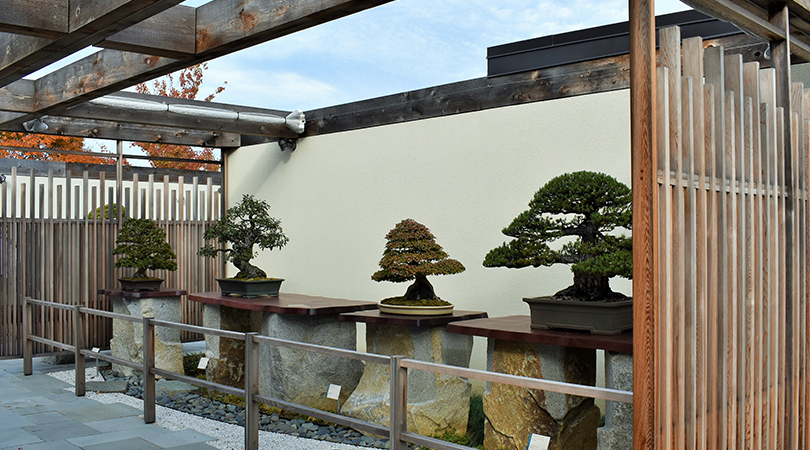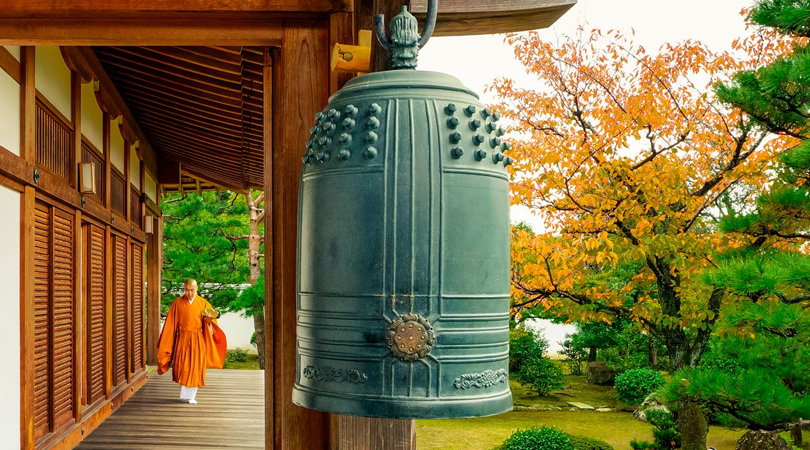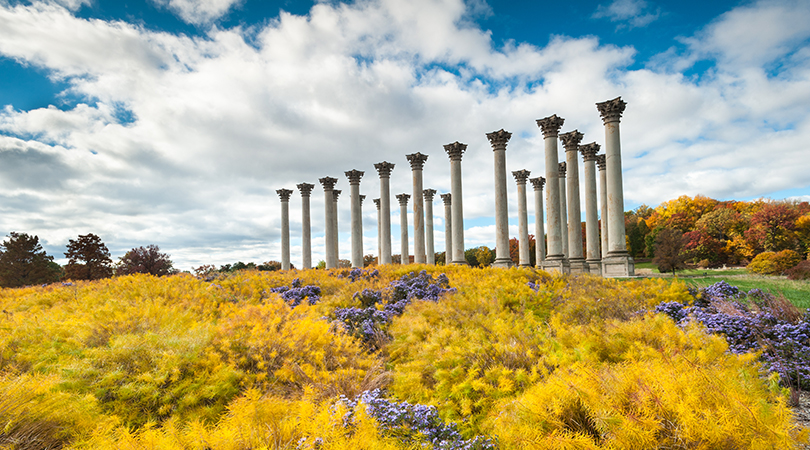New Year's Day
Jan. 1, 2024 | 1:30-2:00pm (Eastern)
National Bonsai & Penjing Museum Courtyard
3501 New York Ave. NE
Washington, D.C. 20002
Hear the resonant tolls of a sacred Japanese temple bell cast in 1798 ring out for the first time at the U.S. National Arboretum. The bell, a gift from the National Bell Festival, will be dedicated and installed in the central courtyard of the three pavilions and special exhibits gallery that comprise the National Bonsai & Penjing Museum. The event will feature a traditional Zen Buddhist blessing and a ceremonial ringing of the bell. Speakers will include:
- Richard T. Olsen | Director, U.S. National Arboretum
- Paul Ashe | Director, National Bell Festival
An old bell finds a new home.
The hanshō, or Buddhist temple bell, was cast in the ninth month of Kansei 10 (1798) by Katō Jinemon from Yokokawa, who came from a family of bell makers in the area of present-day Hachiōji, west of the Tokyo metropolitan area. Their foundry was near the Zen monastery and temple Daisen (also called Daisenji in respect), for which the bell was cast. A monk named Myōdō led a fundraising campaign for the bell's casting. It stands 27 inches tall and weighs 80 lbs.
The Daisen monastery no longer exists. It was located in the Amema village in the Tama district of the province of Musashi. As is true of many Edo-period villages, the names of locations have changed, but the location corresponds to Amema, Akiruno City, Tokyo 197-0825. In 1868, the monastery was incorporated with another temple complex named Jōfukuji, which also no longer exists.
The bell is inscribed in classical Japanese across three ikenomachi, or panels, which detail the particulars of its casting. It includes the phrase:
One strike permeates all things. How could it be said the strike is slight, when it is heard without fail?
Cover image: Bonsai on display within the National Bonsai & Penjing Museum at the U.S. National Arboretum in Washington, D.C.



